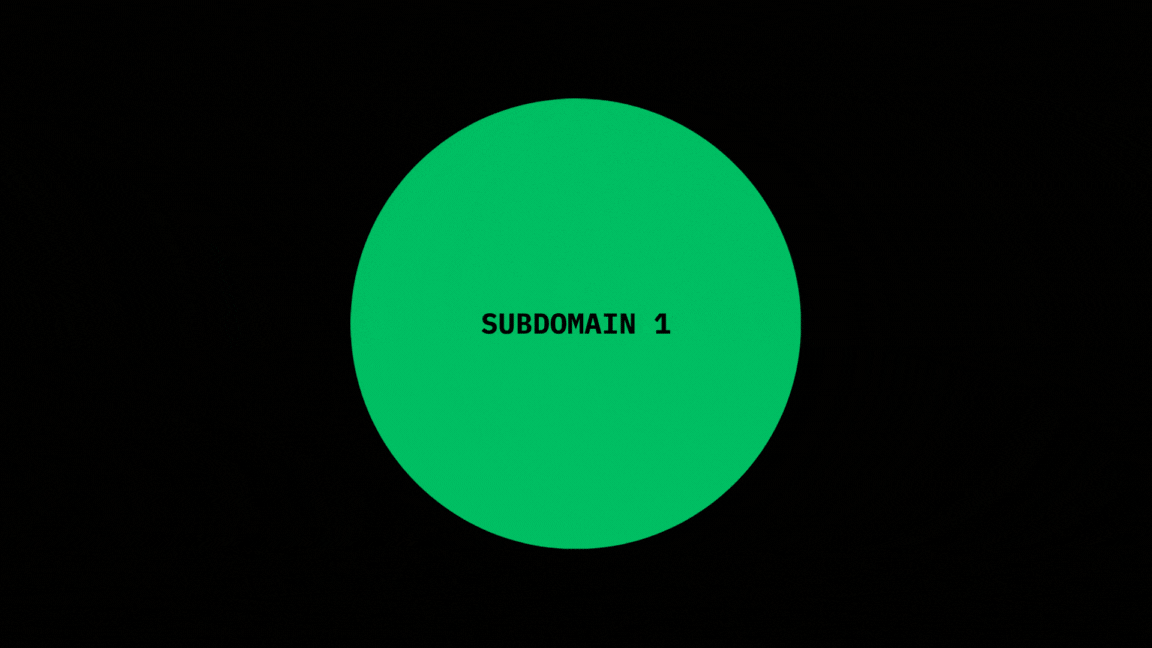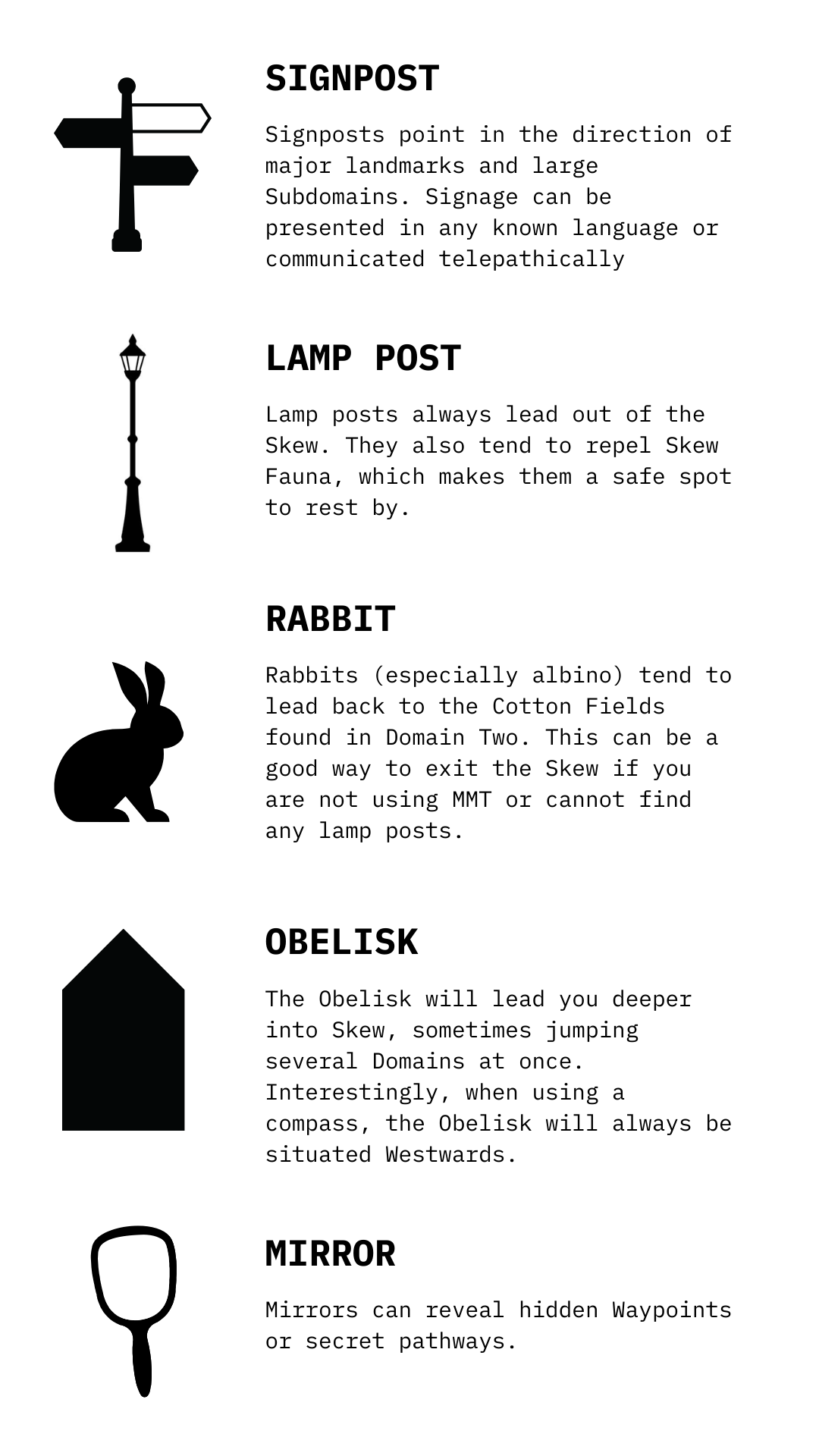Skew Geography Explained
DOMAINS
DESCENDING DEEPER
The Skew is split into nine Domains that contain hundreds of smaller Subdomains. Domains can be hard to define, but are identifiable by a few key characteristics.

Subdomains
LOOKING CLOSER
Everything is possible within the Skew, from whispering flowers to vertical mountains. Subdomains can contain anything. They vary wildly in size from a few feet to several miles. The atmosphere is typically breathable with a gravitation field between 5 -11 m/s².
Most Subdomains stay within a singular Domain, but that isn’t always the case. This can make navigating the Skew even more difficult, and can result in accidentally progressing deeper when you’re trying to leave.

Subdomains connect seamlessly, allowing travel through the Skew. It can sometimes be difficult to tell if you have entered a new location, especially if the Subdomains are quite similar.

Subdomains can have many connections at once. Sometimes you will be able to navigate these multiple connections visually, i.e. walking towards the City instead of into the forest. However, you may need to use Waypoints or your own sense of purpose to access available Subdomains that are not immediately apparent. The BSTCE uses SMM technology to effectively see nearby Subdomains.

Connections between Subdomains are not static. This make traditionally cartography useless, as no one journey is the same. It is possible to create a new connection between your current Subdomain and a desired Subdomain, just by willing it into existence. This technique can become more difficult in inner Domains, which are harder to telepathically influence.

Waypoints
FINDING THE PATH
Waypoints are landmarks that signal a specific path. They can be very useful (and lifesaving) if you are lost and not equipped with SMM technology.

